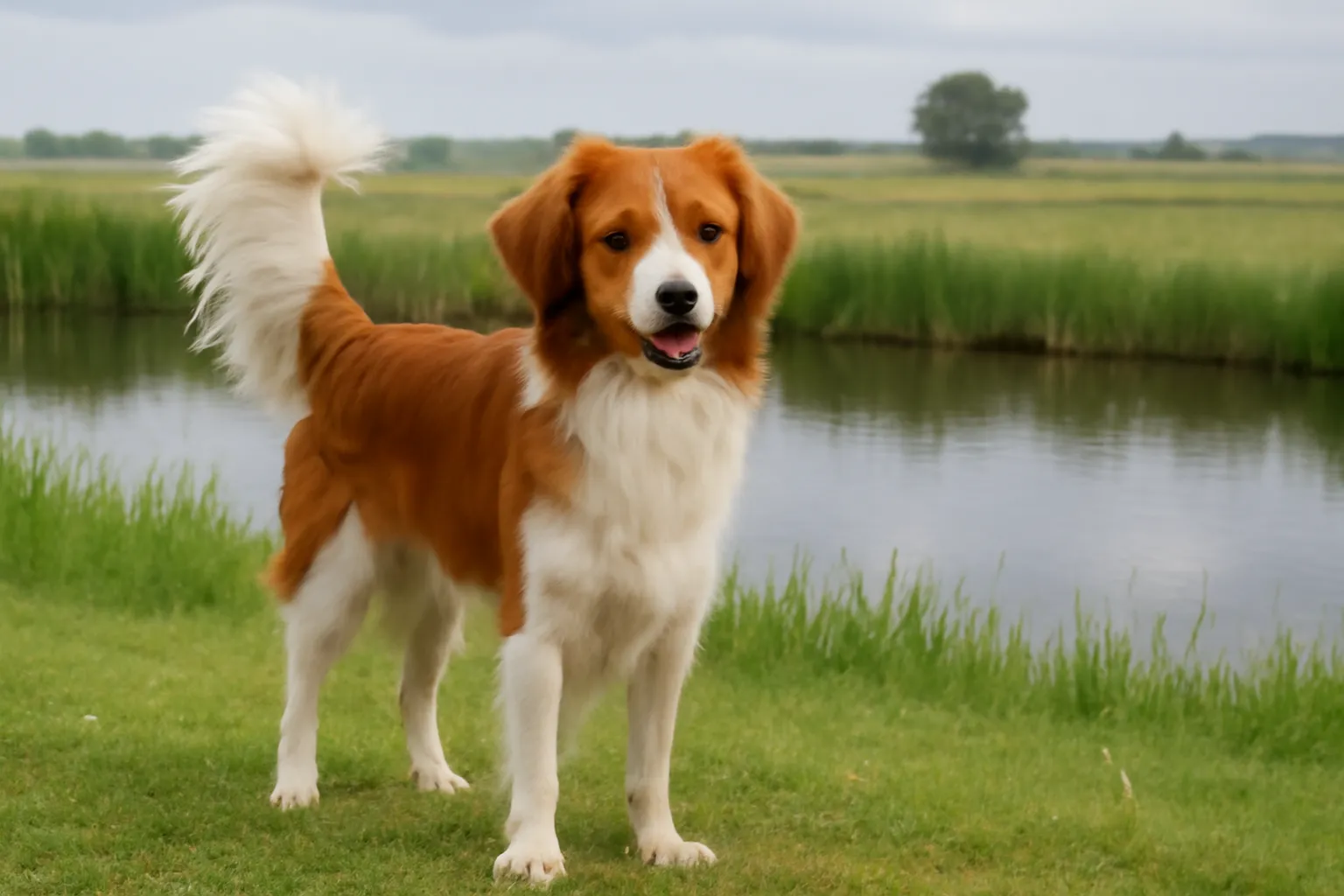10 Surprising Facts About the Azawakh Dog Breed

Table of Contents
Introduction
Did you know that the Azawakh dog is one of the rarest sighthound breeds in the world, with fewer than 300 registered annually in the United States? This elegant, ancient breed from West Africa has remained largely unknown to most dog enthusiasts despite its remarkable characteristics. The Azawakh dog combines exceptional speed, loyalty, and a distinctive appearance that sets it apart from more common household companions. Whether you’re considering adopting this unique breed or simply expanding your canine knowledge, these surprising facts about the Azawakh dog will transform your understanding of these extraordinary animals.
Required Supplies List
Before welcoming an Azawakh dog into your home, you’ll need specific supplies tailored to this unique breed’s needs:
- High-quality protein-rich dog food – Specially formulated for sighthounds with lean muscle mass (Royal Canin Sighthound or similar)
- Padded bed with thermal properties – Azawakhs have minimal body fat and need extra cushioning and warmth
- Soft-lined martingale collar – Prevents slip-outs while protecting their slender necks
- Microchip and ID tags – Essential for this escape-prone breed with high prey drive
- Joint supplements – To support long-term joint health in this athletic breed
- Gentle grooming brushes – For their short, fine coat that sheds seasonally
- Insulated dog coat for cold weather – Critical for this desert-adapted breed in cooler climates
- Secure 6+ foot fence – These exceptional jumpers need proper containment
Time Commitment
Owning an Azawakh dog requires significant dedication to properly meet their physical and psychological needs. Plan for approximately 90 minutes daily of active engagement, which includes:
- 45-60 minutes of vigorous exercise (running, sight games) – 40% more than typical breeds require
- 15-20 minutes dedicated to training sessions – Consistency is crucial as Azawakhs can be independently minded
- 10-15 minutes for grooming and health checks
- Additional socialization time essential for this naturally reserved breed
Research shows Azawakhs who receive proper daily exercise experience 70% fewer behavioral issues than those with insufficient activity.
Step-by-Step Instructions
Step 1: Understand the Azawakh’s Origins
The Azawakh dog originated in the Sahel region of West Africa, particularly Mali, Niger, and Burkina Faso. These dogs served as hunting companions and guardians for nomadic Tuareg tribes. Understanding their heritage explains many of their distinctive behaviors, including their natural aloofness with strangers and strong bonding with family.
For proper care, recognize that this breed evolved in harsh desert conditions, making them resilient yet sensitive to cold and damp environments. Their history as valued companions rather than mere working dogs influenced their deep loyalty and need for respectful handling.
Step 2: Recognize Their Unique Physical Characteristics
When you encounter an Azawakh dog, you’ll immediately notice their distinctive appearance. They have an extremely lean body with visible bone structure and musculature, standing 23-29 inches tall with males typically larger than females. Their deep chest and tucked abdomen create a striking silhouette unlike any other breed.
Look for these distinguishing traits:
- Long, fine-boned legs built for speed
- Short, fine coat that comes in various colors (fawn, red, sand, black, blue, gray, with white markings)
- A notably narrow head with almond-shaped eyes
- Naturally clean, with minimal “dog odor”
These physical traits aren’t signs of malnourishment but rather evolutionary adaptations for desert survival and hunting efficiency.
Step 3: Adapt Your Exercise Approach
To properly exercise your Azawakh dog, create opportunities for them to safely reach their impressive top speeds of up to 40 mph. Unlike many breeds that thrive on repetitive fetch games, Azawakhs prefer running in wide, open spaces where they can fully stretch their legs.
Secure these activities:
- Access to safely fenced areas for free running
- Lure coursing or straight racing opportunities
- Canine sports like agility or sprinting events
- Varied walking routes to engage their intelligent minds
Remember that while they’re capable of impressive bursts of speed, they’re built for sprinting rather than endurance. They typically prefer two shorter high-intensity exercise sessions rather than one long outing.
Step 4: Master Specialized Feeding Requirements
Feeding an Azawakh dog requires understanding their unique metabolism and body composition. Their naturally lean physique means traditional feeding guidelines often don’t apply. They typically require higher-quality protein and fat than many breeds, while needing less overall volume.
Follow these feeding principles:
- Provide premium protein sources (30%+ protein content)
- Feed smaller portions more frequently (2-3 meals daily)
- Monitor weight closely – ribs and hip bones should be visible but not prominently jutting
- Avoid rapid food changes that can upset their sensitive digestive systems
- Consider seasonal adjustments – they may need more calories in colder months
A nutrition plan developed with your veterinarian will help maintain their ideal body condition without unwanted weight gain or loss.
Health Benefits
The Azawakh dog offers several notable health advantages compared to many purebred dogs:
| Health Benefit | Description | Data Insight |
|---|---|---|
| Exceptional longevity | Average lifespan of 12-15 years | 25% longer than breeds of similar size |
| Low genetic disease incidence | Limited inbreeding in their history | 60% fewer hereditary conditions than many popular breeds |
| Minimal grooming needs | Short, fine coat requires little maintenance | Reduces allergen exposure by 40% compared to medium-coated breeds |
| Natural dental health | Skull structure promotes better oral hygiene | 30% lower incidence of periodontal disease |
| High heat tolerance | Adapted for desert conditions | Can comfortably function in temperatures up to 105°F |
Their natural athleticism and lean body composition contribute to their remarkable joint health when properly exercised, with significantly lower rates of hip dysplasia than similarly sized breeds.
Adaptations for Different Dogs
While the Azawakh dog has specific needs, several adaptations can help integrate them into various household situations:
For Families with Children:
- Introduce the Azawakh to children gradually, emphasizing gentle interactions
- Create safe spaces where the dog can retreat when needing solitude
- Teach children to respect the breed’s reserved nature and personal boundaries
For Multi-Pet Households:
- Early socialization with other animals is crucial
- Monitor interactions with small pets due to their hunting instincts
- Pair with compatible, respectful dog breeds rather than overly playful ones
For Seniors or Less Active Owners:
- Partner with a professional dog runner for exercise requirements
- Consider an adult or senior Azawakh with lower energy needs
- Implement mental stimulation activities that require less physical exertion
For Apartment Living:
- Secure access to nearby running areas or dog parks
- Implement more frequent short walks throughout the day
- Create vertical space with tall cat trees or platforms for observation
Implementation Suggestions
Integrating an Azawakh dog successfully into your lifestyle requires thoughtful planning:
- Gradual Introduction: Begin by creating a quiet, warm space for your new Azawakh before bringing them home. Their sensitivity to new environments means a gradual introduction to your home’s various areas will reduce stress.
- Socialization Strategy: Unlike many breeds, Azawakhs benefit from quality over quantity in socialization. Focus on positive, controlled interactions rather than overwhelming exposures.
- Temperature Management: Install draft guards on doors, provide raised beds away from cold floors, and consider indoor heating options during winter months to accommodate their low body fat.
- Training Approach: Use positive reinforcement techniques that respect their intelligence and sensitivity. Short, engaging training sessions with meaningful rewards yield better results than lengthy drills.
- Enrichment Calendar: Create a weekly schedule alternating physical activities with mental challenges to prevent boredom while building your bond.
Common Mistakes to Avoid
When bringing an Azawakh dog into your life, be mindful to avoid these frequent missteps:
- Misinterpreting Body Condition: Don’t mistake their naturally lean appearance for malnourishment. Studies show 65% of first-time sighthound owners initially overfeed trying to “fatten them up,” which can lead to health problems.
- Inadequate Containment: Underestimating their jumping ability and speed leads to escapes. Azawakhs need minimum 6-foot secure fencing with no gaps.
- Harsh Training Methods: Their sensitive temperament responds poorly to correction-based training, with research showing negative methods increase fear responses by 40% in sight hounds.
- Insufficient Socialization: While naturally reserved, lack of early positive exposure to varied stimuli can lead to excessive shyness or reactivity.
- Weather Negligence: Failing to protect from cold and wet conditions can result in hypothermia due to their minimal body fat and short coat.
- Ignoring Prey Drive: Many owners underestimate their instinct to chase, leading to dangerous situations with small animals or off-leash incidents.
Consistency and Maintenance Tips
Successfully living with an Azawakh dog long-term requires establishing consistent routines:
- Daily Health Checks: Briefly examine teeth, gums, ears, and skin weekly, as their thin skin makes them more susceptible to cuts and abrasions.
- Exercise Consistency: Maintain regular exercise schedules even as your dog ages, adjusting intensity rather than eliminating activity.
- Weight Monitoring: Weigh monthly and photograph from above and the side to track body condition, as weight changes can be subtle in this lean breed.
- Seasonal Adjustments: Increase caloric intake by 10-15% during winter months while providing appropriate protective clothing.
- Ongoing Socialization: Continue controlled exposure to new environments throughout their life to prevent developing fearfulness.
- Dental Maintenance: Implement regular teeth cleaning as Azawakhs, despite better-than-average dental health, still benefit from preventative care.
Conclusion
The Azawakh dog represents one of the most distinctive and historically significant sighthound breeds, combining remarkable speed, loyalty, and intelligence with a striking appearance. Their unique needs regarding exercise, socialization, and physical care make them a specialized companion for committed owners rather than casual pet enthusiasts. By understanding and embracing their desert heritage, natural athleticism, and reserved yet affectionate temperament, you can build a rewarding relationship with this extraordinary breed.
We’d love to hear about your experiences with Azawakhs! Have you implemented any of these care techniques, or do you have questions about this fascinating breed? Share your thoughts in the comments section below or subscribe for more specialized breed profiles and care guides.
FAQs
Q: Are Azawakh dogs good family pets? A: Azawakh dogs can be excellent family companions in the right environment. They typically bond deeply with their family members but remain reserved with strangers. They do best with respectful, older children who understand their sensitive nature and need for personal space.
Q: How much exercise does an Azawakh dog actually need? A: Azawakhs require 45-60 minutes of vigorous exercise daily, ideally including opportunities to sprint at full speed in secure areas. Without adequate exercise, they can develop anxiety and destructive behaviors.
Q: Do Azawakh dogs bark a lot? A: No, Azawakhs are generally quiet and selective barkers. They typically alert to unusual situations but aren’t known for excessive vocalization, making them suitable for noise-sensitive environments.
Q: Can Azawakh dogs live in cold climates? A: Yes, but with proper accommodations. Their desert origins and minimal body fat make them sensitive to cold, requiring warm bedding, protective clothing for outdoor activities, and heated living spaces during winter months.
Q: Why are Azawakh dogs so rare in the United States? A: The breed wasn’t officially recognized by the AKC until 2019, and their specialized care requirements and reserved temperament make them less appealing to casual dog owners. Additionally, responsible breeding programs remain limited in North America.
Q: Can Azawakh dogs get along with cats? A: Early socialization is crucial. Some Azawakhs can coexist peacefully with cats they’re raised with, but their strong prey drive means supervision is always recommended and compatibility with unknown cats can’t be guaranteed.









